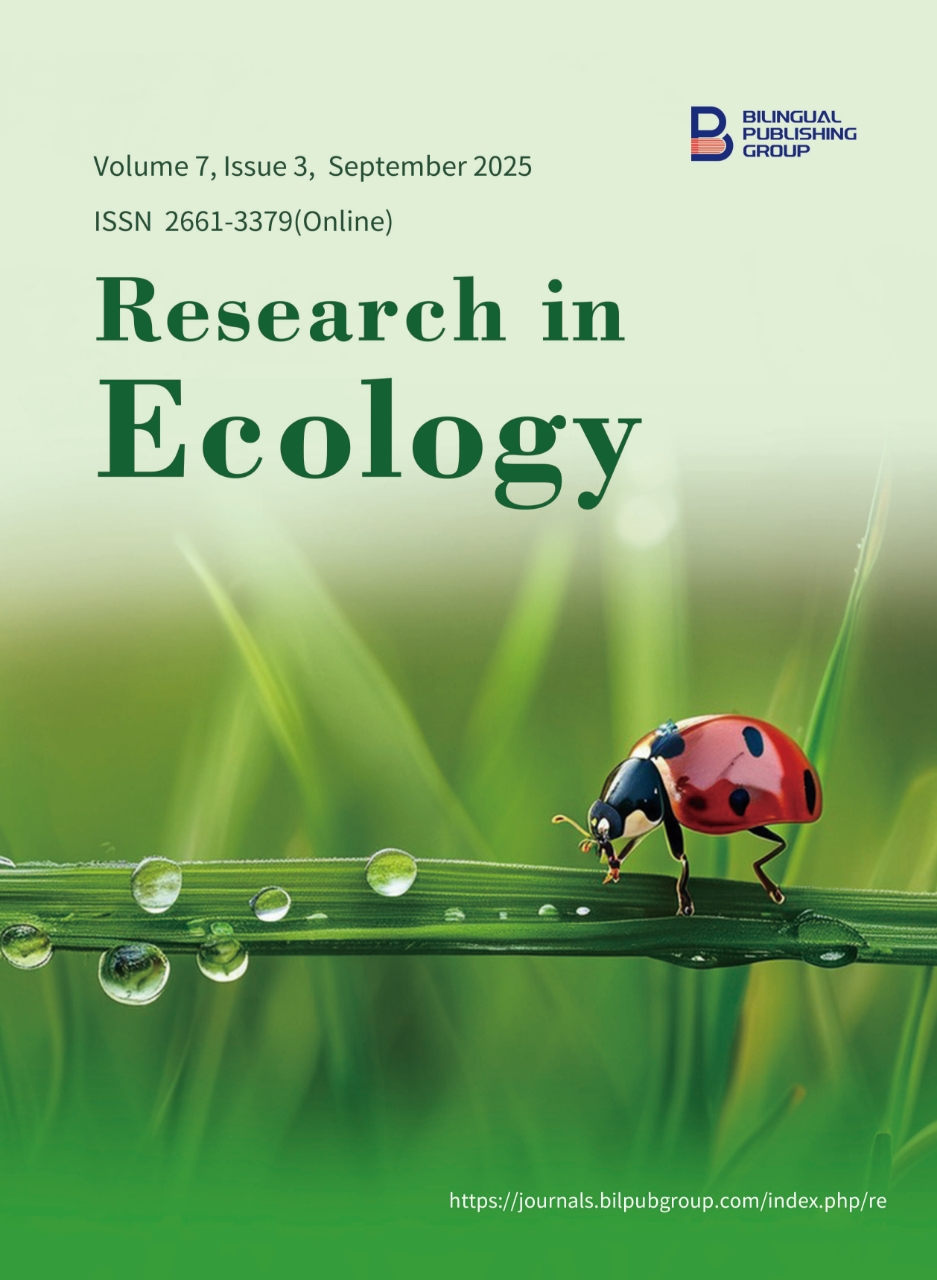
Analysis and Monitoring of Changes in the Central Marshland Area of Southern Iraq Utilizing Remote Sensing Techniques
DOI:
https://doi.org/10.30564/re.v7i3.9866Abstract
The marshes of southern Iraq are of great value due to their roles in the economy, environment, heritage, tourism, and agriculture. However, the region has witnessed remarkable transformations in land cover, influenced by human interventions and natural environmental factors. In this research, the Central Marshlands were selected for study and monitoring. These Marshes form the Mesopotamian Marshes, a vital part of the Tigris-Euphrates river system. This area formerly covered an area of approximately 3,000 km2 and was once home to the lives of Marsh Arabs and their animals. The primary objective of this study was to compile a set of satellite images covering the same marshland region over several decades. The data used includes images captured by various Landsat missions: MSS (1975), TM (1983 & 1993), ETM+ (2003), and the Operational Land Imager (OLI) from Landsat 8 (2015). Satellite images were combined and pre-processed through steps such as layer stacking to create composite images from multiple bands. Several image classification methods were applied, and the classification results showed a significant and unprecedented increase in the percentage of water in the marsh, reaching 16% in 2003. This was combined with vegetation identification techniques, including the identification of vegetation boundaries to detect areas of dense vegetation. In addition, the relative depth of the water was measured to estimate marsh water levels, with the best result obtained in 2003. The normalized mean vegetation index (NDVI) calculated in this study had its best value in 1984 due to the spread of reeds and papyrus during this period. Papyrus is the raw material in the sugar industry, providing a significant economic boost.
Keywords:
Marshland; Image Classification; NDVI; Vegetation Delineation; Relative Water DepthReferences
[1] Lillesand, T., Kiefer, R.W., Chipman, J., 2004. Remote sensing and image interpretation. John Wiley & Sons: Hoboken, NJ, USA.
[2] Diallo, Y., Hu, G., Wen, X., 2009. Applications of remote sensing in land use/land cover change detection in Puer and Simao Counties, Yunnan Province. Journal of American Science. 5(4), 157–166.
[3] Forkuo, E.K., Frimpong, A., 2012. Analysis of forest cover change detection. International Journal of Remote Sensing Applications. 2(4).
[4] Symeonakisab, E., Caccettab, P.A., Wallaceb, J.F., et al., 2006. Multi-temporal land use/cover change detection in the Spanish Mediterranean coast. 34(Part XXX).
[5] UNEP, Partow, H., 2001. The Mesopotamian Marshlands: Demise of an Ecosystem.
[6] Scott, D.A., 1995. A directory of wetlands in the Middle East. IUCN.
[7] Wu, X., Caccettab, P.A., Furby, S.L., et al., 2005. Remote Sensing Analysis of Land Cover Change. In: Proceedings of International Symposium on Spatio-temporal Modelling, Spatial Reasoning, Spatial Analysis, Data Mining and Data Fusion. Journal of Environmental Sciences, Beijing. 327–332.
[8] Vermote, E., Tanré, D., Deuzé, J.L., et al., 1994. Second Simulation of the satellite signal in the solar spectrum (6S), 6S User Guide Version 0. NASA-Goddard Sp. Flight Center-Code. 923.
[9] Richards, J.A., Jia, X., 1999. Remote sensing digital image analysis. Springer. pp. 3.
[10] Stathakis, D., Vasilakos, A., 2006. Comparison of Computational Intelligence Based Classification Techniques for Remotely Sensed Optical Image Classification. IEEE Transactions on Geoscience and Remote Sensing. 44(8), 2305–2323.
[11] Muhsin, I.J., 2011. Al-Hawizeh Marsh Monitoring Method Using Remotely Sensed Images. Iraqi Journal of Science. 52(3), 381–387.
[12] Bellone, P.B., Bellone, F.P.T., 2009. Investigation of Vegetation Dynamics using Long-Term Normalized Difference Vegetation Index Time-Series. American Journal of Environmental Sciences. 5(4), 460–466.
[13] Pierce, F.J., Clay, D., 2006. GIS Applications in Agriculture. 41–42.
[14] Gandhi, M., Parthiban, G.S., Nagaraj, T., et al., 2015. NDVI: Vegetation change detection using remote sensing and GIS –A case study of Vellore District. Procedia - Procedia Computer Science. 57, 1199–1210.
[15] Chen, X., Vierling, L., Deering, D., 2005. A simple and effective radiometric correction method to improve landscape change detection across sensors and across time. Remote Sensing of Environment. 98, 63–79.
[16] Yacouba, D., Guangdao, H., Xingping, W., 2010. Assessment of Land Use Cover Changes Using NDVI and DEM in Puer and Simao Counties, Yunnan Province, China. Report and Opinion. 2(9), 7–16.
[17] Muhsin, I.J., Hamid, A., 2017. Monitoring the Changes of Vegetal Cover of Karblaa Province (Iraq) using Target Detection and Classification Techniques. International Journal of Science and Research. 6(7), 1408–1412.
[18] Muhsin, I.J., 2016. Change detection of remotely sensed image using NDVI subtractive and classification methods. Iraqi Journal of Physics. 14(29), 125–137.
[19] Hussain, H.A., Abdullah, S.A., Al Maliki, A.A., 2023. Using spatial analysis methods to evaluate the soil contamination of Baghdad city, Iraq. Journal of Physics: Conference Series. 2114.
[20] Mahdi, F., Adul Razzaq, B., Sultan, M., 2023. Assessment of Satt al-ara water quality using CCME/WQI analysis in Basrah city of south Iraq. Iraqi Journal of Science. 64(1), 480–491.
[21] Hassan, Z.D., 2025. Geomorphological and Environmental Characteristics of the Al-Mashab and Al-Salal Marshes, Southern Iraq. Iraqi Journal of Science. 66(3), 1095–1108. DOI: https://doi.org/10.24996/ijs.2025.66.3.10
[22] Lyzenga, D.R., 1981. Remote sensing of bottom reflectance and water attenuation parameters in shallow water using aircraft and Landsat data. International Journal of Remote Sensing. 2(1), 71–82. DOI: https://doi.org/10.1080/01431168108948342
[23] Stumpf, R.P., Holderied, K., Sinclair, M., 2003. Determination of water depth with high-resolution satellite imagery over variable bottom types. Limnology and Oceanography. 48(1-part-2), 547–556. DOI: https://doi.org/10.4319/lo.2003.48.1-part-2.0547
[24] Pacheco, A., Horta, J., Loureiro, C., Ferreira, Ó., 2015. Retrieval of nearshore bathymetry from Landsat 8 images: A tool for coastal monitoring in shallow waters. Remote Sensing of Environment. 159, 102–116. DOI: https://doi.org/10.1016/j.rse.2014.12.004
[25] Losada, M.Á., 2021. Method to assess the interplay of slope, relative water depth, wave steepness, and sea state persistence in the progression of damage to the rock layer over impermeable dikes. Ocean Engineering. 239, 109904.
Downloads
How to Cite
Issue
Article Type
License
Copyright © 2025 Emad Ali Al-Helaly, Israa J. Muhsin, Ebtesam F. Khanjer, Ban A. Alrazaq, Sundus A. Abdullah Albakry

This is an open access article under the Creative Commons Attribution-NonCommercial 4.0 International (CC BY-NC 4.0) License.




 Emad Ali Al-Helaly
Emad Ali Al-Helaly






